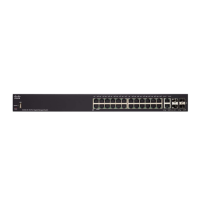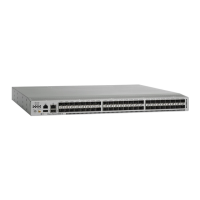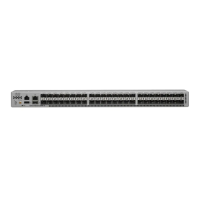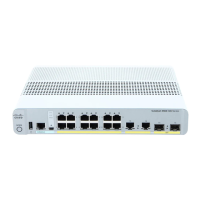IP Configuration: VRRP
Configurable Elements of VRRP
Cisco 350, 350X and 550X Series Managed Switches, Firmware Release 2.4, ver 0.4 350
19
• All the existing VRRP routers of the virtual router operate in VRRPv2. In this case,
configure your new VRRP router to operate in VRRPv2.
• If there is at least one VRRP router of the virtual router operating in both VRRPv2 and
VRRPv3. In this case, configure your VRRP router to operate in VRRPv3 even though
VRRPv2 is also interoperable.
NOTE If there are VRRPv2 only routers and VRRPv3 only routers in the virtual router,
you must configure at least one VRRPv2 and VRRPv3 router.
NOTE When both VRRPv2 and VRRPv3 are enabled on a VRRP router, the VRRP router transmits
both VRRPv2 and VRRPv3 packets. According to VRRPv3 standards, enabling both VRRPv2
and VRRPv3 should be done when upgrading from v2 to v3. Mixing the two versions should
not be considered as a permanent solution. Please refer to the VRRPv3 standard for details on
VRRPv2 and VRRPv3 inter-operation.
Virtual Router IP Addresses
Each virtual router is assigned one or more IP addresses for which the current master assumes
responsibility.
A VRRP router supporting a virtual router must have an IP interface on the same IP subnet
with respect to the IP addresses configured on the virtual router.
Assigning IP addresses to a virtual router is done according to the following rules:
• All the VRRP routers supporting the virtual router must be configured with the same
virtual router IP addresses in their configuration of the virtual router.
• None of the IP addresses can be used in another virtual router, or in VRRP routers that
are not supporting the virtual router.
• One of the VRRP routers supporting the virtual router must be the owner of all the IP
addresses of the virtual router. A VRRP router is the owner of the IP addresses if the
addresses are real addresses configured on its IP interface.
• If a VRRP router (the physical router) is the owner of the virtual router’s IP addresses,
the virtual router’s IP address must be configured manually on the VRRP router, not
DHCP assigned.
• If a VRRP router is not the owner of the virtual router’s IP addresses:
- The VRRP routers that are non-owners must be configured with an IP interface on
the same IP subnet as the IP addresses of the virtual router.
- The corresponding IP subnets must be configured manually in the VRRP router,
not DHCP assigned.

